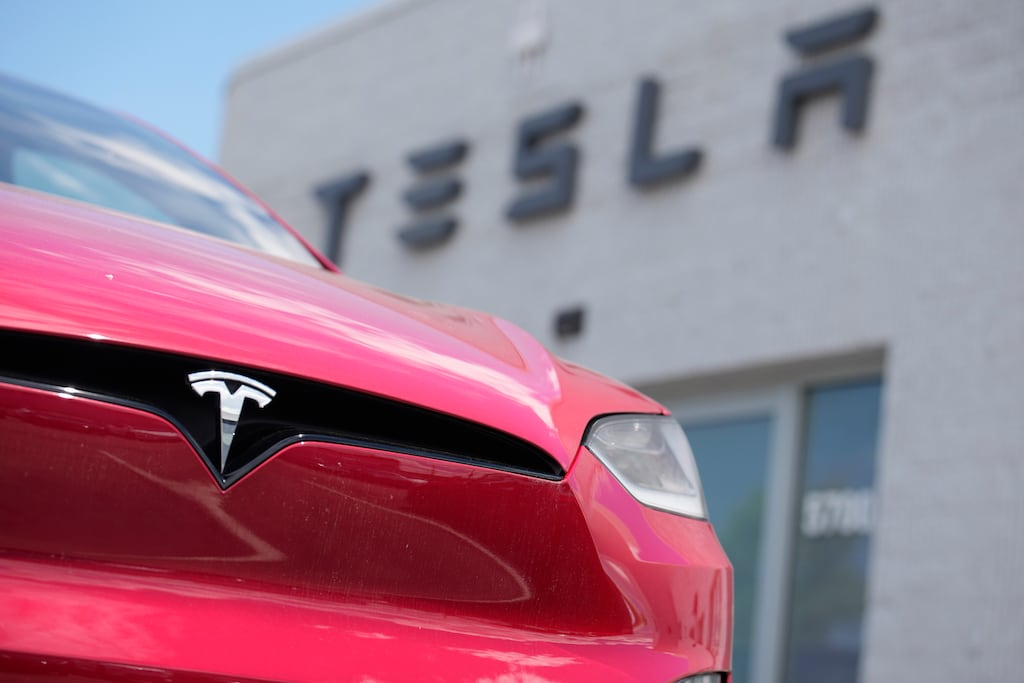Tesla shares fell 8 per cent on Friday, wiping almost $40 billion (€36.5 billion) from the carmaker’s market valuation, after Elon Musk’s much-hyped Robotaxi event disappointed investors with a lack of detail about a planned fleet of autonomous “Cybercabs”.
The plunge in the stock left Tesla as the worst performer on the S&P 500. However, the group remains the most valuable car company in the world, with a market capitalisation of $687bn.
Mr Musk, the world’s richest man, promised the new two-seated vehicle – without a steering wheel or pedals – would be available for less than $30,000 and be in production by the end of 2026, if it secures regulatory approval.
But he did not provide details on the technology behind the robotaxis, nor on how he would bring down the cost of the self-driving vehicles.
“We found Tesla’s Robotaxi event to be underwhelming and stunningly absent on detail,” said Bernstein analyst Toni Sacconaghi. Information about “new products, offerings, and time frames were absent, and product introductions were largely consistent with expectations”, he added.
At the glitzy “We, Robot” event at Warner Bros Studios in Los Angeles on Thursday, Mr Musk also unveiled a prototype for a 20-person Robovan and predicted that his group’s artificial intelligence-powered Optimus humanoid robot “buddies” would be “the biggest product ever of any kind” and cost less than $30,000.
But the unveiling focused more on design, branding and Musk’s idiosyncratic vision of the future and less on the technology advances needed for Tesla to achieve it.
Following months of delay, Mr Musk’s presentation started nearly an hour late and ended in less than 30 minutes, with Optimus robots dancing in glass gazebos and serving beer to investors.
While the robots moved with more fluidity than previous models, analysts at Morgan Stanley said they remained under human control. “It is our understanding that these robots were not operating entirely autonomously, but relied on tele-ops [human intervention] so it was more a demonstration of degrees of freedom and agility,” they said.
Jefferies analyst John Colantuoni described the event as “toothless” and predicted rivals such as Uber – which recently announced a partnership with Google’s self driving car unit, Waymo – would benefit as a result.
He added that “Tesla did not provide verifiable evidence of progress” towards the required technology, “which makes it difficult to assess feasibility of the targets outlined at the event”.
Uber stock rose 9 per cent on Friday, while rival ride-hailing app Lyft climbed 10 per cent.
Mr Musk has said Tesla’s pivot to autonomous driving and AI could take its valuation as high as $5tn, about seven times its current market value. The group’s shares had risen 45 per cent in anticipation of the unveiling since it announced the “robotaxi day” on April 5.
But the Tesla chief has repeatedly missed targets to roll out self-driving taxis. He first promised fully autonomous rides from Los Angeles to New York by the end of 2017. In 2019, he predicted that one million robotaxis would be on the road by the following year.
Another disappointment for investors was Musk’s failure to unveil a more affordable electric vehicle, known unofficially as the Model 2, which will be priced at $25,000, to revive its ageing product portfolio. – Copyright The Financial Times Limited 2024
- Sign up for the Business Today newsletter and get the latest business news and commentary in your inbox every weekday morning
- Opt in to Business push alerts and have the best news, analysis and comment delivered directly to your phone
- Join The Irish Times on WhatsApp and stay up to date
- Our Inside Business podcast is published weekly – Find the latest episode here





